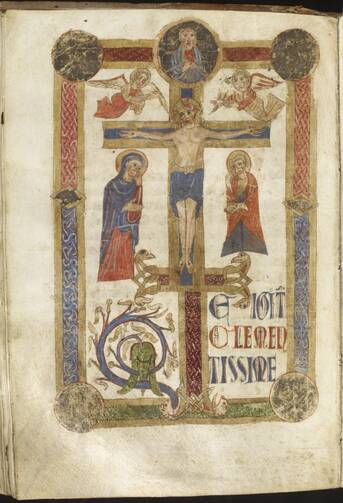You know how sometimes you find yourself slogging through a literally and figuratively Big Novel thinking “This ‘work’ is long merely for sake of acquiring the Heft of Importance”—and “I’m 400 pages into this thing but still think I’m going to cut bait, rather than keep throwing good mental money after bad.” Not so with the wonderful “Living by the Book” show at the Walters Art Museum in Baltimore. This small exhibit is packed with remarkable treasures and illuminating ideas. At the risk of sounding like a classic-rock DJ, I would go so far as rate it “All killer and no filler.”
A quote from an anonymous monk greets you: “...how arduous is the writer’s task. It dims your eyes, makes your back ache, and knits your chest and belly together—it is a terrible ordeal for the whole body.” “My neck and eyes agree,” I chortled to myself, but soon stopped laughing when I learned about what went into the making of a book in the mid-15th century.
Books used to be labor-intensive affairs beyond the mere blah-blah complaints of editing and revising being so hard.Yea, books used to require, material-wise, at least 20 animals (for a “modestly sized book”) for the parchment, quills, reeds, pigments (made from things like buckthorn berries, raw umber, lapis lazuli and chemicals to produce colors like verdigris,) golf leaf for gilding, thick thread for sewing, precisely cut boards and leather binding. The content of the books was meticulously copied or written by monks and nuns, who, by this work, not only preserved religious treatises and Scripture, but also many philosophical and scientific works that would otherwise be lost, by such writers as Homer, Aristotle, Euclid, Archimedes and Virgil.
The breathtaking beauty of monastic calligraphy (is this where the Catholic obsession with penmanship began?) and illustrations rewards close and patient viewing. Helpful captions point out the most delightful details. A page at the end of a “light and portable” exorcist’s text is riddled with 13 small red crosses, which indicate where the exorcist is to make the Sign over the exorcisee. The frequency of crosses on this page denotes a situation of great urgency, we are informed. “#($@)* is getting real,” I thought to myself, with a great rush of spooky awe and gratitude for being on Rome’s good side.
A beautiful illustration of the Profession of a Clarissan Nun weaves together the anonymous nun’s entrance to the Order of St. Clare, Clare’s own profession, reception of the Rule, visit from the pope and ascension into Heaven, and the story of Jesus’ own crucifixion. It almost brought me to tears. “This small Flemish drawing is better than 99 percent of current movies,” I thought.
The texts, which range from spiritual instruction to missals (a form invented by monastics) and books made for private use, contain many witty and poignant clues and asides. Frequently a monk would bury a picture of himself in the text. Jonah and the whale spout from the R in the word Resurrexi (I arose) in an Easter day missal text. Two dour, winged nuns surmount a funeral scene in an Office of the Dead text in a Book of Hours, which, the exhibition notes, is supposed to be poking fun at them for being grim and otherworldly, but I had to differ: the clawed religious, to my eye, seemed to actually mock their status as figures of fun, in what might be the first accidentally feminist meta-turning of the tables.
Medieval texts are still a part of living culture. Don’t miss the bona-fide St. Francis Missal, believed to be the same missal St. Francis consulted in the Church of San Nicolo in Assisi, which guided his decision to live in poverty, following only the teachings of Jesus. As such, it is considered a “relic of touch.” Monks and nuns from all over the world still make yearly pilgrimages to the Walters to see this manuscript.
For those who still doubt the significance of pre-Gutenberg handmade monastic texts, it bears pointing out that these books will probably outlive most of our prone-to-rot books and transient electronic jottings. It’s quite possible that medieval monks and nuns will preserve some of humanity’s best for some unknown future as our own.








